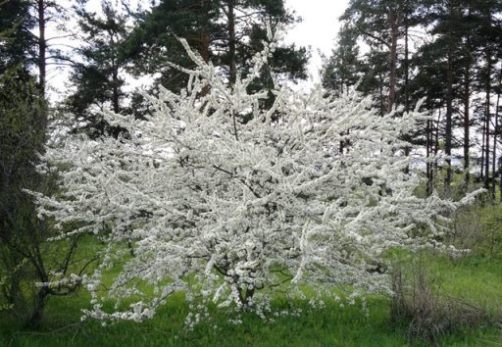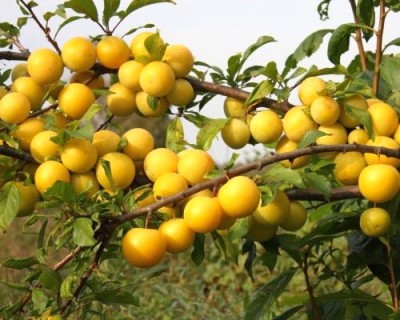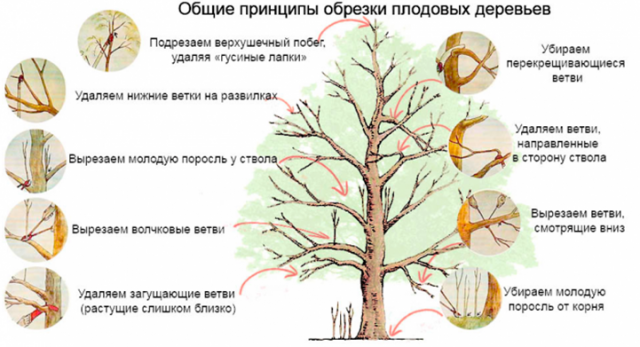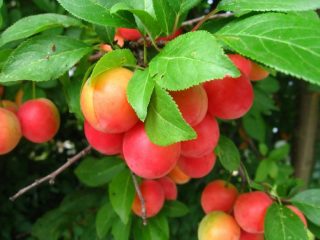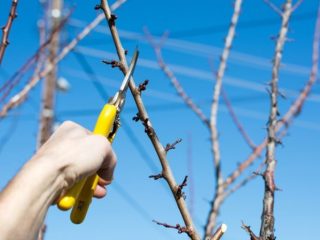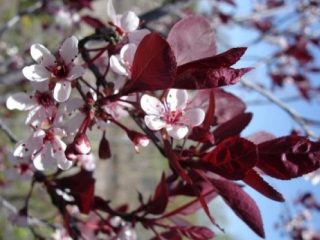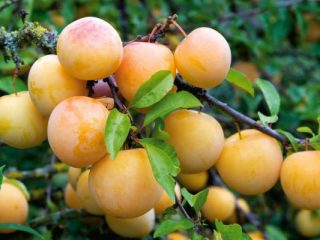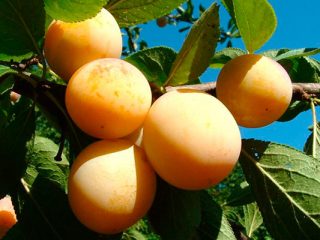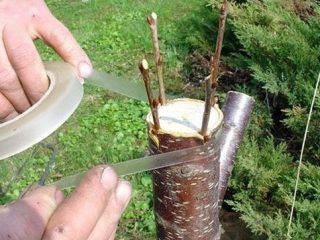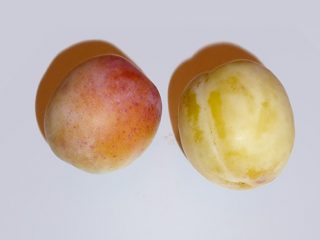Content
Plum Gift to St. Petersburg is a fruit variety with an interesting selection history. The variety has become widespread in the North-West region of Russia. In conditions of low temperatures and cold gusty winds, plums produce abundant harvests of tasty fruits. Thanks to many positive traits, the variety has become a popular garden crop.
History of variety selection
In 1999, in the Krasnodar Territory, the Skoroplodnaya plum was crossed with the Pionerka cherry plum. The result was a new variety. The planting of seedlings and the harvesting of the first harvest took place in St. Petersburg. This is how the plant got its name.
Description of plum Gift to St. Petersburg
The variety was bred for cultivation in the North-West region of Russia. Plum has distinctive features:
- The average tree height is 3 m.
- The crown is spreading and dense.The leaves are oval-shaped, light green.
- Early flowering - May 6-21.
- Fruiting is regular and abundant. The plum ripens by mid-August.
- The ripe fruit weighs 17 g. Bright yellow oval fruits with juicy pulp. Plum – dessert, sweet and sour.
Plum blossoms Gift to St. Petersburg with beautiful white flowers. Landscape designers use the variety as a decorative hedge.
Characteristics of the variety
Thanks to the characteristics of the Podarok St. Petersburg variety, the most suitable place for planting, the basics of proper care, and the necessary preventive measures to maintain the tree’s immunity are determined.
Drought resistance, frost resistance
The variety has a high level of frost resistance. Plum Gift to St. Petersburg is perfectly restored in case of damage due to fluctuations in low temperatures. In severe frosts, cherry plum can bear fruit. This is confirmed by numerous experiments with artificial frostbite.
Dry, warm climates are also well tolerated by plums. It is necessary to regularly, abundantly water the plant and create artificial shade.
Plum pollinators Gift to St. Petersburg
Cherry plum is self-sterile. It is best pollinated by the varieties Pchelnikovsky, Pavlovsky yellow, and Seedling Rocket. The flowering period is early. The crown is covered with white flowers in early May. The fruits ripen by August.
Productivity and fruiting
Plum Gift to St. Petersburg brings an annual, abundant harvest. The first fruits are harvested three years after planting. From one ten-year-old plum you get about 27 kg. A more mature tree produces up to 60 kg of sweet fruit.
Area of application of berries
Cherry plum is used in making jam, jam, and compotes.An excellent summer dessert is fresh plum variety Gift to St. Petersburg.
Resistance to diseases and pests
Plum is characterized by high resistance to plant diseases and insect damage. By performing a number of preventive measures, the fruit tree’s immunity to the negative influences of the environment increases.
Advantages and disadvantages of the variety
The plum variety Gift to St. Petersburg has a number of undeniable advantages:
- High degree of frost resistance. Good degree of adaptation to arid climate conditions.
- Regular, abundant fruiting.
- Plum is not affected by fungal diseases or insect pests.
- Sweet fruits containing a large amount of vitamins.
- Plum can be stored for a long time without losing its appearance.
Landing Features
Planting a plum tree as a Gift to St. Petersburg is a standard process. When performing this algorithm, it is necessary to take into account the characteristic features of the variety. They influence the location of the plant, the timing of planting, and additional measures to ensure comfortable growth of cherry plum.
Recommended timing
Favorable time for planting is spring. In the cold climate of the northern regions, the plant needs to take root well and adapt to changes in the external environment. This will allow the plum to survive the first winter after planting with minimal damage to the shoots.
Choosing a suitable location
A well-lit place, protected from drafts, is the best option for planting plum seedlings. Gift to St. Petersburg.
In autumn and winter, the winds are stronger and colder.Cherry plum should create additional protection from excessive drafts. This could be the wall of a house, another structure, or an artificially created fence.
Plum is undemanding to soil composition. Loamy soil with a neutral reaction will nourish the tree more efficiently. Groundwater must be taken into account. Their level should not exceed 80 cm to the roots of the young seedling.
What crops can and cannot be planted nearby?
Pollinating varieties will have a positive effect on the Podarok St. Petersburg plum. It is undesirable for a fruit tree to be adjacent to thorns.
Selection and preparation of planting material
To plant northern cherry plum, use a standard set of tools:
- Shovel.
- Rake, hoe or hoe for loosening.
- Fertilizer.
- Stake, rope for fixation.
- Water for irrigation.
Landing algorithm
The choice of plum seedling is of great importance. Gift to St. Petersburg:
- There should be no damage to its bark.
- The branches should be in good condition, not dry.
- The root of a young plant is up to 10 cm.
Recommended planting steps - not a labor-intensive process:
- Holes for cuttings should be prepared in the fall or spring two weeks before planting. Hole size – 70 x 70 cm.
- Soil preparation. The soil from the pits is mixed with superphosphate, potassium, and compost. The resulting mixture is placed in each cavity.
- A stake is placed in the middle of the pit.
- The seedling is lowered down and the roots are carefully straightened. They should be 5-7 cm above the bottom of the pit.
- Soil is poured onto the plum and compacted.
- The tree is tied to a peg.
- The planting is watered. Use 3-4 buckets of water.
- The ground around the trunk is mulched.
The gap between seedlings is 2 m, between rows of plums is 3 m.
Aftercare for plums
Caring for the Gift to St. Petersburg variety must be thorough and complete. Carrying out regular procedures for watering, fertilizing, pruning, preventing diseases and pests will ensure a bountiful harvest of sweet plums:
- Watering must be three times a day. The first stage in June is after flowering. The second moistening is in July. In August, the tree is watered for the third time.
- Feeding. For the first three years, the plant needs enough fertilizer provided during planting. From the fourth year onwards, potassium fertilizer, urea, ammonium nitrate, and superphosphate are applied to the plums.
- Trimming. After planting, the seedling grows rapidly. Its shoots develop rapidly, forming a crown. It is recommended to cut branches in early spring for the next season. Side shoots are pruned. Their shortening will promote the formation of new buds.
- Preparing for winter. Before the onset of frost, the tree trunk is whitened with a solution of lime. The plum is covered with spruce branches, a special material.
- Prevention of plant diseases, damage from insects. Regular spraying of the trunk and crown of the plum tree will protect the tree from harmful effects.
Diseases and pests, methods of control and prevention
Disease/Insect | Description | Control method/Prevention |
Moniliosis | Gray ulcers form on fruits | Spray with Bordeaux mixture |
Coccomycosis | Red spots appear on the top of the leaf. There is a pink coating under the leaf | After flowering and harvesting, the tree is treated with a solution of Bordeaux mixture |
Hole spot | The foliage is affected by red spots. As the disease progresses, they turn into through holes. Leaves deteriorate and fall off | Before the buds open, spray with iron sulfate. After flowering, the plum is treated with a solution of Bordeaux mixture |
Aphid | Affects foliage | During the warm season, the tree is treated with soapy water and special insecticides. |
Conclusion
Plum Gift to St. Petersburg is a fruit tree popular in the northern regions. It is widespread in areas with harsh, cold climates. The variety produces excellent yields at low temperatures. Fragrant, juicy, sweet plums are an excellent summer dessert for ordinary summer residents and large gardeners.
